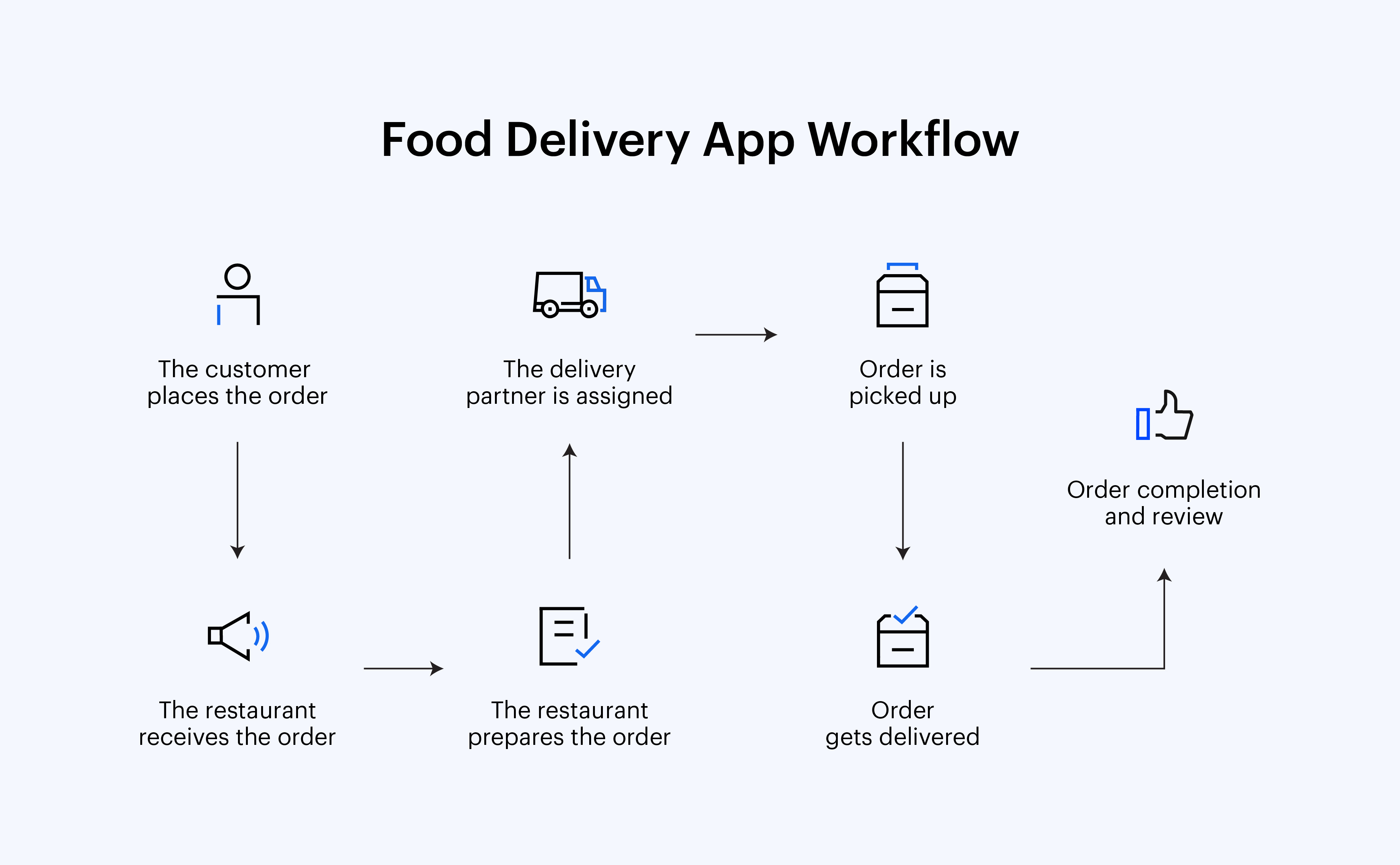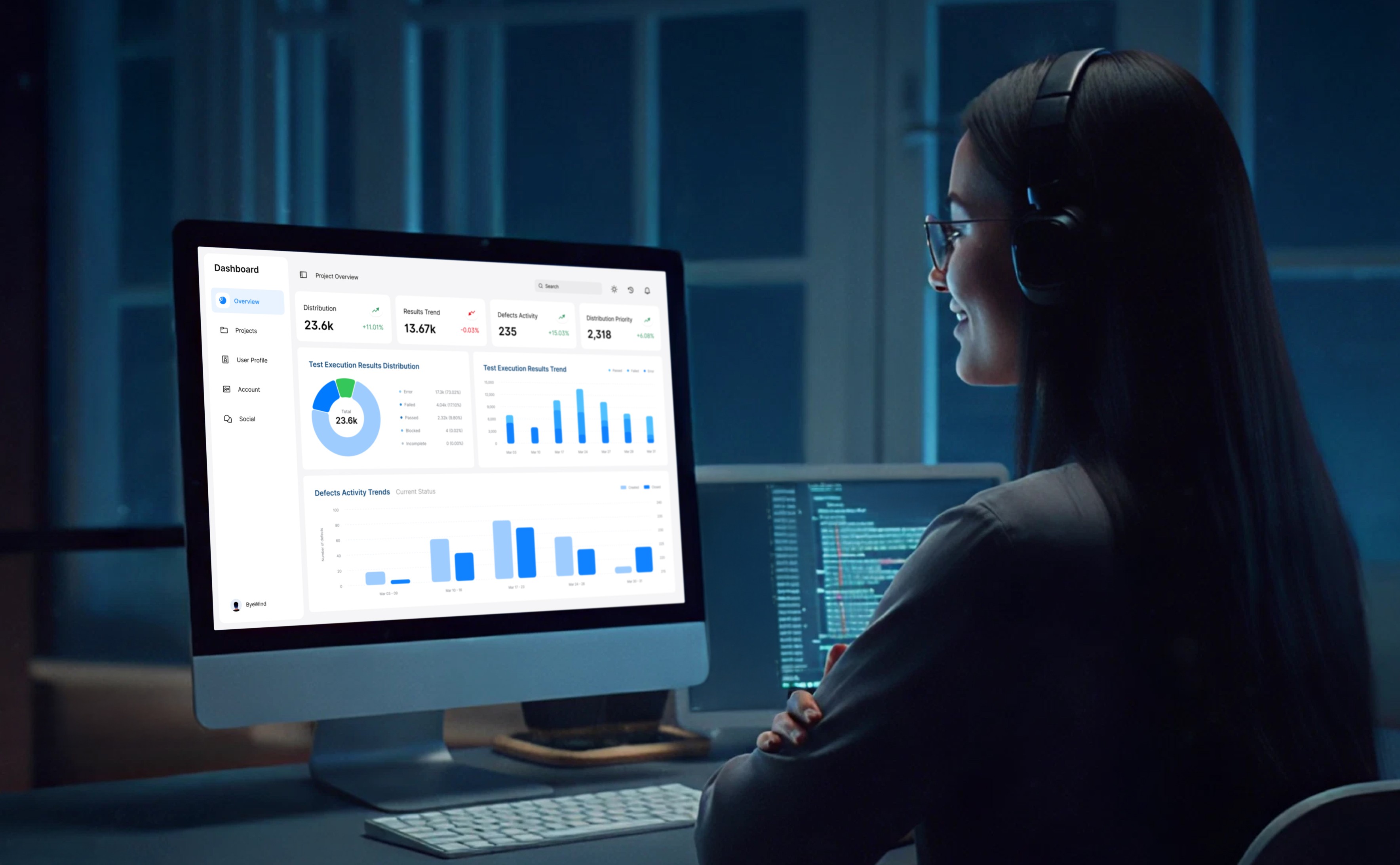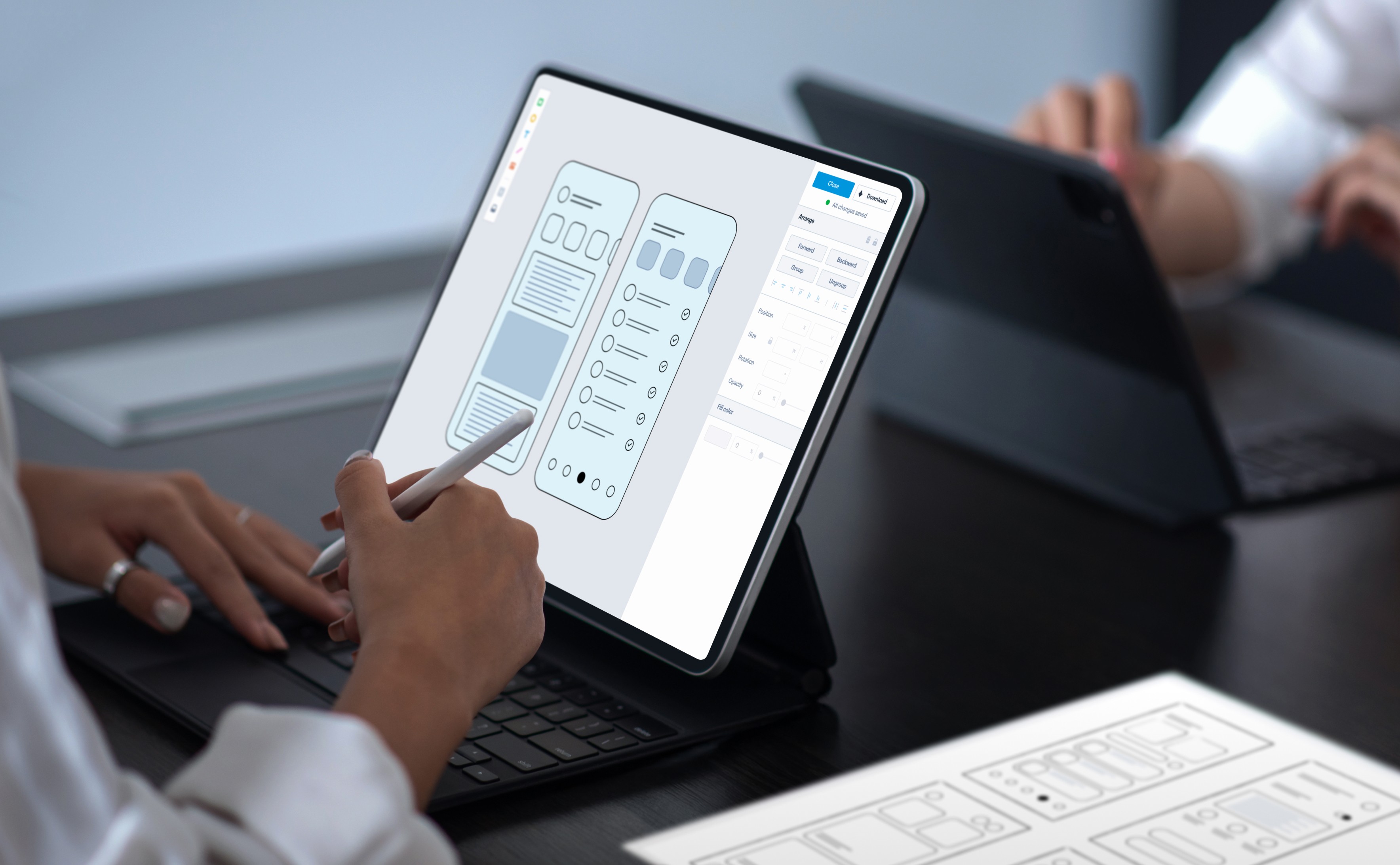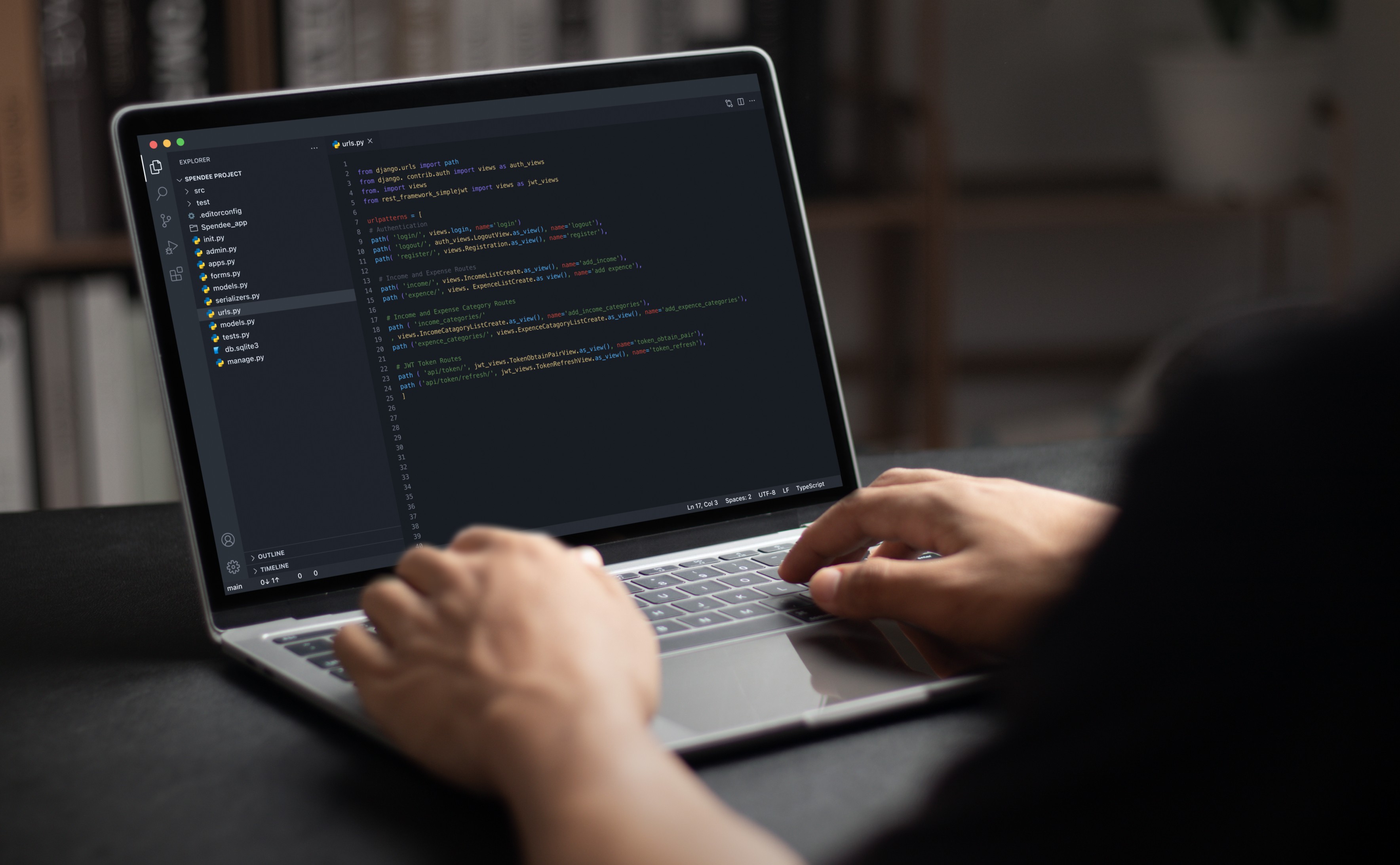How to Build a Food Delivery App

Online food delivery systems are inevitable in our everyday lives and offer the comfort of ordering food. While food delivery apps witness an incredible surge in popularity, it is unsurprising to see various players trying to enter the market by developing a food delivery app.
According to a study from Statista, the revenue from the online food delivery market is estimated to hit $1.40 trillion in 2025. It is expected to reach a CAGR of 7.79%, resulting in an increased market volume of $1.89tn by 2029.
Precisely, there are many techniques you can adopt to mark your authority in the food delivery app market. Be it creating a food delivery app for the restaurant, developing a food delivery app for the grocery store, or building an on-demand food delivery app, you need to follow certain strategies for your app development.
If you’re an optimistic food tech entrepreneur and looking to develop an application that makes your sales multifold, we have articulated simple steps in this blog to build such an app or make the app even better. Read on to see how food delivery apps work, the benefits of developing a food delivery app, and how much it would cost to create food delivery app.
How Do Food Delivery Apps Work?

1. The customer places the order
The customer signs up with the food delivery app. Once signed up, the customer scrolls through various restaurant menus. The user adds items needed in the cart to place the order. Any coupons or discount orders are applied before the payment. The customer chooses the payment option and delivery location they find the most convenient to receive the order.
2. The restaurant receives the order notification
The restaurant owner application gets the order notification. After the order gets accepted by the vendor, the customer is also notified of the order acceptance. The customer can not check the preparation time via the application dashboard.
3. The restaurant prepares the order
After the order is confirmed, the restaurant prepares the order and the app notifies the customer that the order is getting ready. Once the order is prepared, it is packed and ready to be assigned to the delivery agent.
4. The delivery partner is assigned
The message reaches the delivery partner nearby to give information about the food pickup and delivery. The delivery partner reaches the restaurant to pick up the order.
5. Order is picked up
The delivery partner picks up the order and the app notifies the customer that the delivery partner has reached the restaurant to pick up the food. Also, the app gives the real-time location details of the delivery partner that lets the customer track the time the food would arrive at the mentioned destination.
6. Order gets delivered
The delivery partner reaches the destination and the app notifies that the ‘food has arrived’. The delivery partner contacts the customer and hands over the package. The food gets delivered and the app sends a notification to confirm delivery.
7. Order completion and review
After the food gets delivered, customers can share the rating for the restaurants based on food taste, and quality. The customer can also add ratings for delivery partners based on the service experience.
How to Make a Food Delivery App - Step-by-Step Process
Developing applications like Swiggy, Zomato, or UberEats and making them engaging among users require something beyond just following the same features. How to start a food delivery app easily? Here are the steps to understand this in detail.
Step 1: Keep an eye on the trends in the food delivery industry
Take note of the new delivery channels and various other trends. To make the project stand out in a particular segment, you can integrate the ordering through social media accounts functionality. Domino’s Pizza is an example, where the customers’ orders were offered through Twitter. App users could place their orders just with a ‘tweet’ of a pizza emoji.
Another way is to use chatbots to place orders via messages and request food with a single word. Grubhub is a great example, where its integration with Alexa has allowed customers to reorder from any of their past three purchases.
Food delivery companies largely use wearable devices that simplify the ordering process. OrderUp had incorporated an app for the Apple Watch, enabling customers to place orders, track delivery status, and check when the food would arrive.
Step 2: Choose a food delivery model
You should choose either the order-only model or the order-and-delivery model based on what fits you the best. In the order-only model, companies only manage orders, while in the order-and-delivery model, food startups need to manage both orders and their delivery.
The first model has low barriers to entry and is crowded with competitors, while the second model has an increased extent of management, which could affect business scaling. The former model doesn’t make you feel worried about cooking and delivery, while the latter lets you receive a profit once the food delivery is in place.
Step 3: Research the target market
You should know the target audience to develop a stunning food delivery application. Once you learn who will use the food delivery app, it is easy to develop an app that perfectly suits the target audience’s requirements. To derive a clear conclusion about the target audience, you can use the demographic data and create the target customer profile, looking into the following classification:
- Social characteristics like age, income, gender, and nationality.
- What is the potential customer issue the project would be able to solve?
- Why should customers leverage the platform over the other competitors?
- What would be the feeling the app provokes from customers?
Answering the above questions will let you develop a good idea about the target customers.
Step 4: Choose the key features of the food delivery services
While developing a mobile application for food delivery, consider the features below:
- Login lets you log into the app through email or social network profiles.
- Search enables searching by filters, menu, and food category.
- Order placing lets you add meals to the cart.
- Order checkout contains all chosen dishes and the order total.
Payment lets users pay for the order with the help of a built-in payment gateway. Integrate multiple payment providers like Stripe, PayPal, etc. You can also incorporate push notifications/SMS features to notify users about the order status. Order tracking gives real-time information about the status of the order. Tools like Google Location API for Android and CoreLocation framework for iOS help in real-time order tracking. Nevertheless, Mapkits and Google Maps let couriers find the ideal route to reach the customers’ location.
Step 5: Select the technology stack of food delivery app development
Based on the business model of a food delivery startup, you might require various technologies. Choose the right technology stack for restaurant listing, payment gateways, finding user locations, and push notifications. If you’re unfamiliar or stuck with choosing the right technology stack, you can consult a food delivery app development company to get it done for you.
Step 6: Design and development
In this step, you decide how it looks based on the development model and the nature of your project. With the help of a design and development company, you can get help to carry out the design work. The app design experts can assist you with customising buttons and text to suit your branding. You can effortlessly add plugins for reservations and additional features to go along with the food delivery solutions.
Step 7: Marketing and launch
Launching your food delivery application is the final step. You’ll need to get the app live on both the Play Store and App Store to increase the reach of potential users. In the case of local stores, you might need to offer incentives to the users for an early app try-on. Providing an initial discount on the first order can convince someone to try the app. Even if you don’t make a great profit on the particular order, this is a small price you pay for user acquisition. After you make the food delivery app live, you can also print flyers to put across the storefront and send out emails. You can also promote the app across social media.
Want to Create a Food Delivery App That Stands Out?
Let's talkLoading...
Benefits of Food Delivery Apps
Let’s have a closer look at the advantages that food delivery apps have for your business.
- Market Demand: Consumers already expect products to reach their doorstep. Giant retailers and even small businesses have been finding ways to offer the best online food delivery services possible to fulfil the market demand.
- Time saver for Customers: Driving for order pickup is time-consuming, particularly in urban cities where parking is difficult. Customers go for food delivery apps as these save time and effort as they can sit back and relax while their order reaches the chosen location in less time.
- Ease of Use: A mobile food delivery app is a convenient option for both businesses and customers. It offers an easy-to-use interface, with simple options to navigate, search along the food options, add food to the cart and process payments. Also, the businesses get paid quickly and can streamline the orders.
- Increase in ROI: Food delivery apps let you generate a quick return on your initial investment. Based on the subscription costs, you can learn what the monthly breakeven point should be on your application.
- Expand the Business: Food delivery apps let you generate another source of revenue for your business. Managing food delivery internally with your app is the best way to expand your business. It minimises dependence on third-party platforms, improves your profits and helps cultivating loyal customers.
Key Features of a Great Food Delivery App
To develop a successful food delivery app, you should make sure it holds the right features. Here are the core features you should consider to steer your app in the right direction:
User Registration and Profile Management
Every food delivery application has user profiles. You need to ensure that every profile and user interface gets designed appropriately.
- Customer app: Lets users browse for food items and add the food to a cart. Users should be able to navigate along nearby restaurants and food categories for an effortless browsing experience.
- Admin: Authorised people will use admin profiles at a grocery store or a restaurant. This lets them see orders getting in and manage order fulfilment.
- Delivery driver: A separate driver interface lets them accept new orders and provides them with pick-up instructions.
Search Functionality
In case the customers aren’t aware of what they need, you need to classify the products in a way customers can narrow down the options. Hence a search functionality is important to replace the task of scrolling through many items to find a product.
Payment Integration
Customers should be capable of saving the preferred payment methods to the profile. This lets them checkout with a single click instead of manually entering card information for every purchase. Payment integration makes it easier for customers to pay with digital wallets already stored on the device.
Coupons and Loyalty Rewards
Customer loyalty is the heart of business success. With a food delivery app, you can let the customers track their loyalty and redeem rewards easily. Adding customer loyalty plugins to the apps can help you set up a loyalty program that suits your business model.
Push Notifications
This is a great way to remind customers about special promotions. These could be: buy 1 get 1 offers, discounts, free delivery, a new restaurant in the area, or any catchy promotion messages. These notifications persuade customers to open the app and trigger the activity. Push notifications are also useful in reminding customers once the driver arrives with the order.
Delivery Tracking
Your food delivery app should make it easier for customers to track their orders. This will prevent them from wondering what takes it so long. The standard status flow is as follows: preparing order, order ready, driver picking up order, and driver en route.
How Much Does it Cost to Develop a Food Delivery App?
The mobile application’s cost includes many elements like the number of integrations, platforms, elements included etc. The mobile app development team creates a complete app estimation after the discovery phase. This phase includes several components like functional specifications, UI/UX design, and visual prototypes.
The discovery phase helps you to define the scope of work, develop a project roadmap, set a realistic MVP budget, plan resources, test the app MVP with the target audience, and develop a solid investment pitch. The exact cost of a food delivery app depends on various factors. So there isn’t an exact answer to the question. However, with the help of a reputed app development company, you can determine the cost of your food delivery app development project.
Tips To Build a Successful Food Delivery App
Define your USP (Unique Selling Proposition)
Identify your business' key value proposition to let it stand out from the competitors. Firstly, analyse the existing food delivery market and the factors that trigger customers to use the food delivery apps. Make a detailed competitor research to build a unique offering based on the opportunities and gaps. Build food delivery app that fulfills the requirements of a specific market segment.
Comply with the legal requirements
Food delivery apps should adhere to the necessary food licenses and regulations to make them safe to launch and operate. These include food sale licenses, health and safety standards, and personal data protection policies.
Prioritise data protection
The app collects personal data like payment-related information, contact numbers, and home addresses, hence the creation of a food delivery app should focus on implementing reliable data protection measures. This includes data encryption, Role-Based Access Controls (RBAC), data storage in certified cloud environments, security audits, vulnerability assessments, etc.
Collect user feedback and improve
By gathering user feedback, you can take steps to continuously improve the food delivery app. Analyse user feedback in app stores to find the common issues and make room for improvements. Implement A/B tests to compare the features of your app and decide on what works for your users. Make continuous improvements and regular changes based on the user’s reactions and market trends.
Wrapping Up
Food delivery apps are great for grocery stores and local restaurants that wish to offer customers a convenient way of ordering food. Now you might have learnt how to create a food delivery app effortlessly with the simple steps mentioned in this blog.
Be careful about the key features we’ve covered and focus on them during the app development. With the help of on-demand food delivery app development services from a reputed company like WAC, you can get support in covering the entire scope of app development including ideation, design, development, deployment and marketing.
Our team comprises expert app developers and consultants with specialisation in on-demand app development. Whether you seek support in building food delivery apps or fine-tuning your existing apps, we’re here to guide you throughout your food delivery app development journey. Let’s get started!
Thinking About Building Your Own Food Delivery App?
Let's talkLoading...










